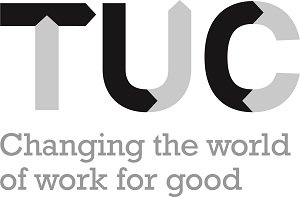Disability employment and pay gaps 2019
Disabled people experience significant barriers to getting and keeping jobs. This results in an employment gap of around 30 per cent. But this report shows that disabled people face double discrimination. Not only are they less likely to have a paid job but when they do, disabled people earn substantially less than their non-disabled peers.
This pay gap is a major contributing factor to the financial stress experienced by disabled workers. The current glacial pace of change cannot be allowed to continue. And rather than showing any signs of improvement, the disability pay gap has increased over the last 12 months by 0.3 percentage points.
The government must take steps to ensure that disabled people who want to work are able to do so. It needs to act now to tackle these concerning trends. Introducing mandatory pay gap reporting, alongside mandatory action plans, and moving away from ineffective voluntary approaches needs to be an immediate priority.
This report looks primarily at the disability pay gap, which is the difference between the average hourly pay of disabled and non-disabled people, building on TUC research published in 2018.
The report also examines the disability employment gap, which is the difference between the employment rates of disabled and non-disabled people, and considers the impact of financial stress on disabled workers. Disabled people have significantly lower employment rates then non-disabled people. While the gap has narrowed, there has only been a very slight improvement of less than one percentage point over the past year. More needs to be done to ensure that disabled people who want to work are able to do so.
Disabled people experience significant barriers to getting and keeping jobs. This results in an employment gap of around 30 per cent. But this report shows that disabled people face double discrimination. Not only are they less likely to have a paid job but when they do, disabled people earn substantially less than their non-disabled peers.
Disabled workers experience a pay gap of 15.5 per cent, earning £1.65 less an hour on average which equates to £3,003 less a year. This pay gap is a major contributing factor to the financial stress experienced by disabled workers. The current glacial pace of change cannot be allowed to continue. And rather than showing any signs of improvement, the disability pay gap has increased over the last 12 months by 0.3 percentage points.
Disabled women continue to face the most significant pay gaps of all, higher than those faced by both disabled men and non-disabled women. This highlights the importance of employers taking an intersectional approach when tackling their gender pay gaps. Gender pay gap action plans should take account of the specific steps required to address the barriers experienced by disabled women in accessing, remaining in and progressing at work.
The low pay which results from the disability pay gap makes disabled workers more likely to be negatively affected by financial stress than non-disabled workers. Disabled workers are more likely than their non-disabled peers to have to go without basic amenities, such as heating on a cold day or food, when they are short on money and are more likely to ask for outside assistance from charities because of the financial hardship they face.
The government must take steps to ensure that disabled people who want to work are able to do so. It needs to act now to tackle these concerning trends. We have seen how the power of transparency has begun to concentrate employers’ attention on tackling the gender pay gap. Public policy needs to be used to drive change on the disability pay gap too. Introducing mandatory pay gap reporting, alongside mandatory action plans, and moving away from ineffective voluntary approaches needs to be an immediate priority.
Throughout the report we refer to disability as defined within the Equality Act 2010. This sets out that people are disabled if they have a physical or mental impairment that has a ‘substantial’ and ‘long-term’ negative effect on their ability to do normal daily activities.
Stay Updated
Want to hear about our latest news and blogs?
Sign up now to get it straight to your inbox
